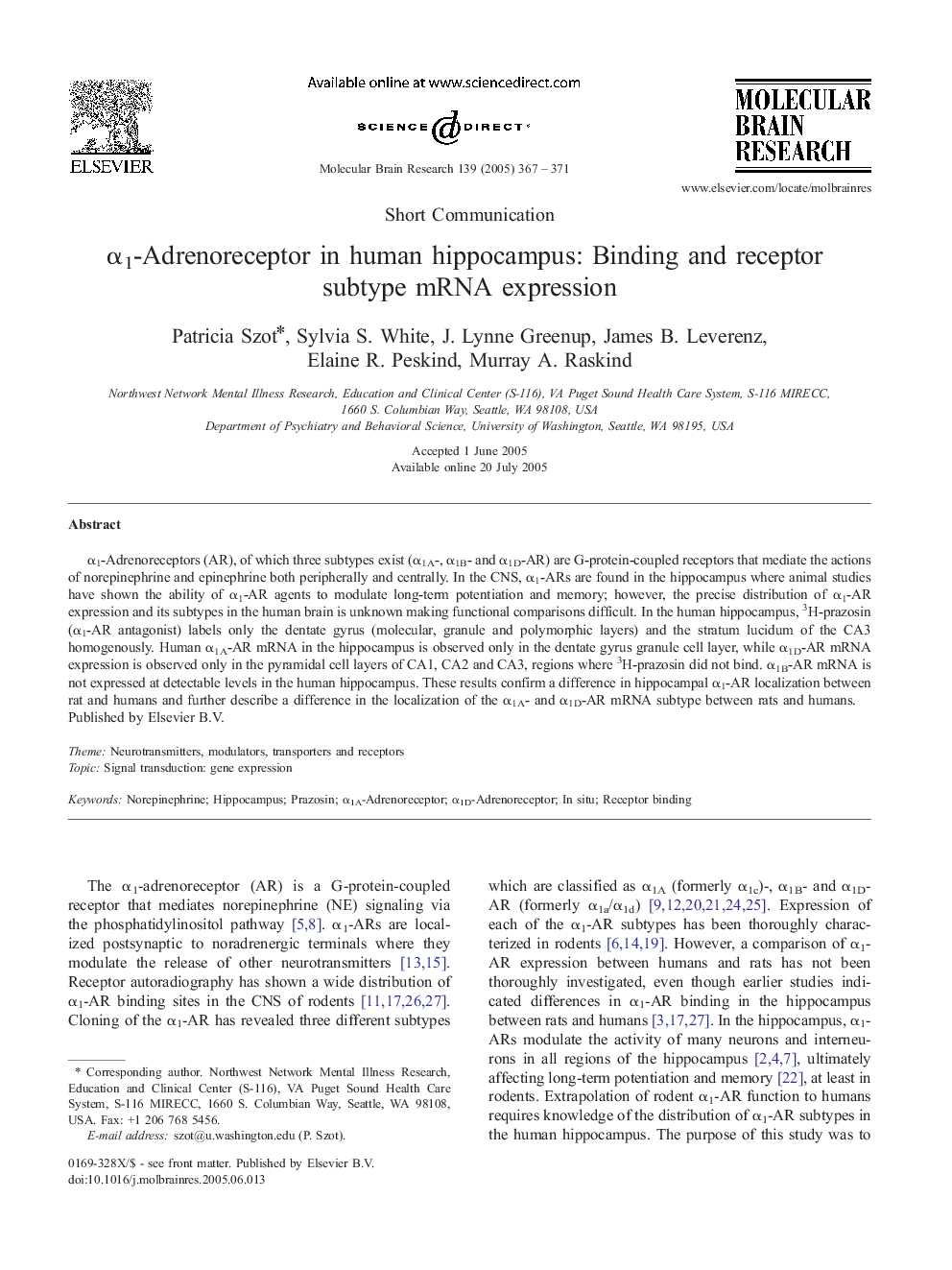| Article ID | Journal | Published Year | Pages | File Type |
|---|---|---|---|---|
| 9410614 | Molecular Brain Research | 2005 | 5 Pages |
Abstract
α1-Adrenoreceptors (AR), of which three subtypes exist (α1A-, α1B- and α1D-AR) are G-protein-coupled receptors that mediate the actions of norepinephrine and epinephrine both peripherally and centrally. In the CNS, α1-ARs are found in the hippocampus where animal studies have shown the ability of α1-AR agents to modulate long-term potentiation and memory; however, the precise distribution of α1-AR expression and its subtypes in the human brain is unknown making functional comparisons difficult. In the human hippocampus, 3H-prazosin (α1-AR antagonist) labels only the dentate gyrus (molecular, granule and polymorphic layers) and the stratum lucidum of the CA3 homogenously. Human α1A-AR mRNA in the hippocampus is observed only in the dentate gyrus granule cell layer, while α1D-AR mRNA expression is observed only in the pyramidal cell layers of CA1, CA2 and CA3, regions where 3H-prazosin did not bind. α1B-AR mRNA is not expressed at detectable levels in the human hippocampus. These results confirm a difference in hippocampal α1-AR localization between rat and humans and further describe a difference in the localization of the α1A- and α1D-AR mRNA subtype between rats and humans.
Keywords
Related Topics
Life Sciences
Neuroscience
Cellular and Molecular Neuroscience
Authors
Patricia Szot, Sylvia S. White, J. Lynne Greenup, James B. Leverenz, Elaine R. Peskind, Murray A. Raskind,
